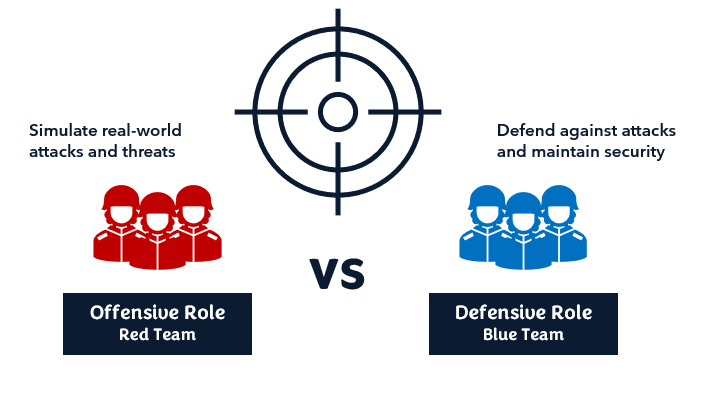

The red team and blue team approach is inspired by military strategies, where red team represents the aggressors and blue team represents the defenders. This approach helps organizations assess and improve their security by simulating real-world attack scenarios and identifying vulnerabilities.

| RED TEAM | BLUE TEAM |
|---|---|
Objectif: Simulate real-world attacks and threats by adopting the perspective of an adversary. |
Objectif: Defend against attacks and maintain the security of systems or organizations. |
|
Offensive Role Act as ethical hackers or security experts who attempt to exploit vulnerabilities and breach the defenses of a system or organization. Aim to identify vulnerabilities, evaluate the effectiveness of existing security measures, and provide insights into potential attack vectors. Conduct penetration testing, vulnerability assessments, social engineering, and other tactics to identify weaknesses in security controls. After the assessment, the red team provides detailed reports outlining the vulnerabilities discovered, potential impact, and recommendations for improving security measures. |
Defensive Role Responsible for monitoring, detecting, and responding to security incidents and threats. Monitor system logs, network traffic, and security controls to detect and mitigate potential attacks in real-time (Incident Response). Focus on implementing and managing security controls, such as firewalls, intrusion detection systems, antivirus software, and access controls. Responsible for vulnerability scanning, patch management, security awareness training, and proactive security measures. Blue team members can learn from red team assessments to strengthen their defenses and improve incident response capabilities. |